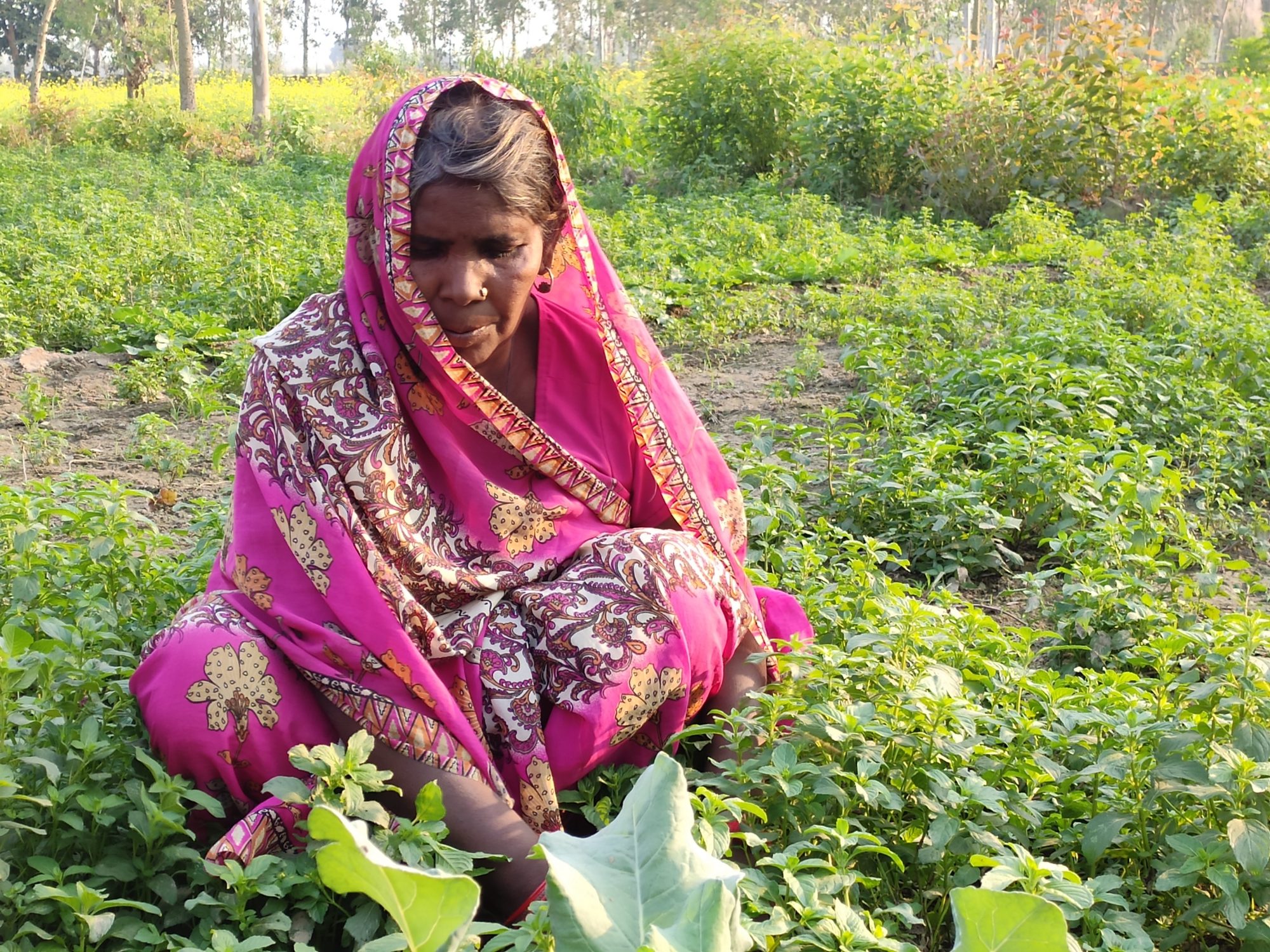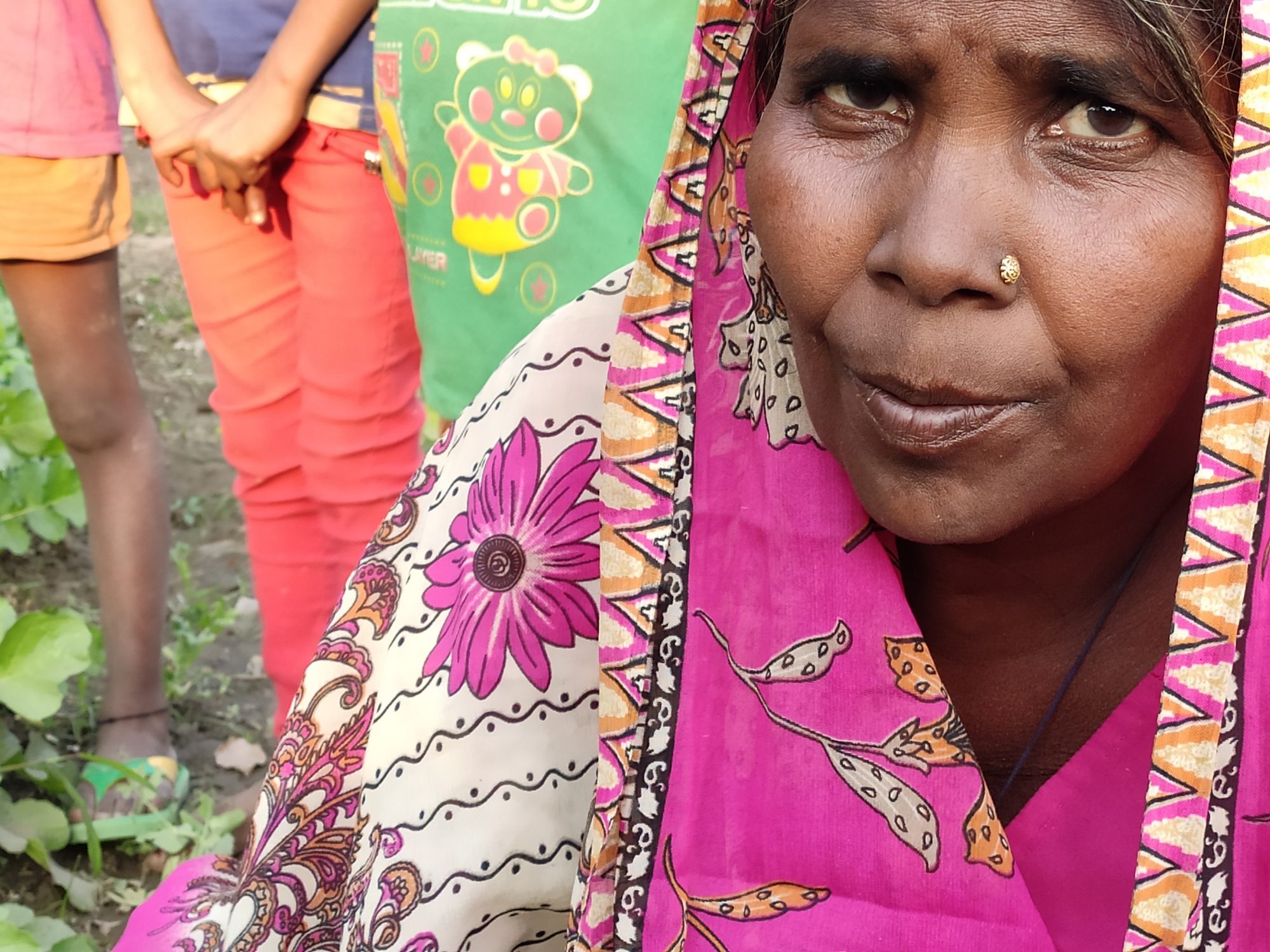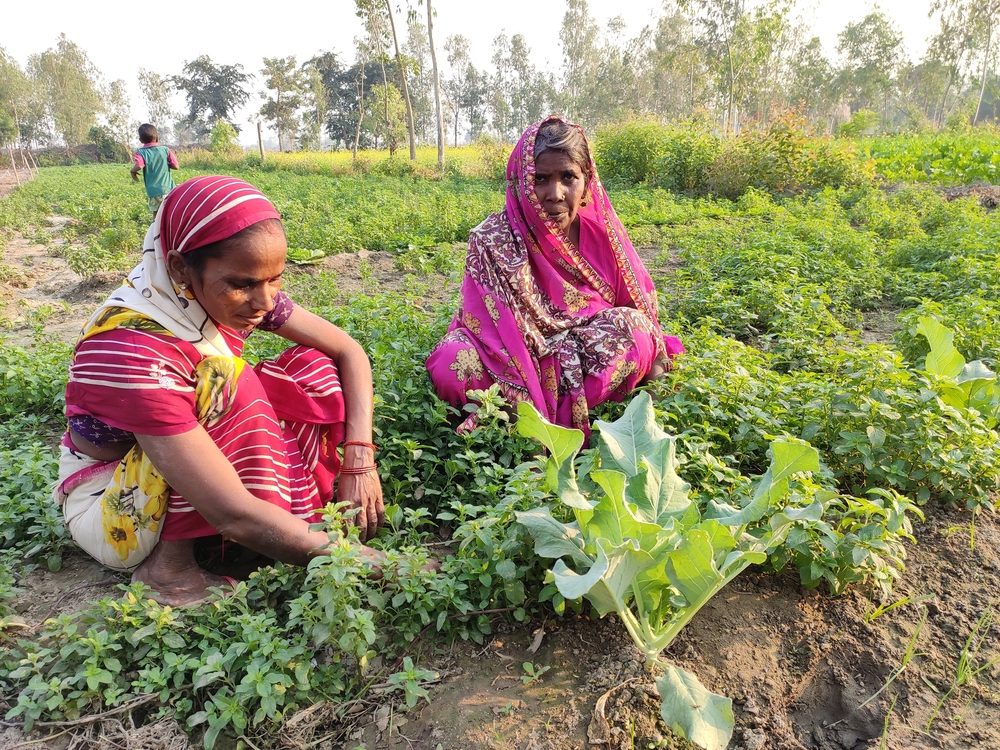‘There are no holidays for a farmer. I don’t even know what day of the week it is’
Jagrani, a female farmer, talks to Gaon Connection about a life spent in the fields, of hard physical labour and no guaranteed returns. She speaks for the countless women farmers who toil hard every day -- in their fields and their homes


Her head is covered by her sari pallu. I notice that she doesn’t wear a lot of jewellery, except for earrings, a tiny gold stud in her nose and a black thread fashioned like a necklace.
Aapka naam? (What’s your name?)
She drew a blank and looked at me.
“Aap apna naam bhool gaye!” (You forgot your name!) There were a few giggles.
“Naam se to koi bulave na. Sab amma kahe hai saalo se. Isliye bhool gayi” (No one calls me by my name. They have been calling me amma, which is why it slipped my mind).
Someone in the crowd that had gathered around us said: “Jagrani, Shreemati (Mrs) Jagrani.”
“Aapki umar?” I asked her for her age, not really expecting an answer. A blank, again. Someone in the crowd said “60 hai shayad”. (She might be 60).
Just a few minutes ago, Jagrani was busy working in her farm. The Rural Connection team was headed for Bilhara village in Barabanki district, about 60 kms from Uttar Pradesh’s capital Lucknow when we saw some women toiling in their farms in Sonhara village. We asked them if they were willing to answer a few questions. They collectively decided that Jagrani, being the eldest, should be their representative.
What do you visualise when someone mentions the word ‘farmer’? Call it a cliché, but for me, it’s almost always either a farmer wearing a white kurta and dhoti, toiling in the barren fields of Marathwada in Maharashtra or the larger-than-life farmers of Punjab wearing colourful turbans and driving tractors in their sarso ke khet.
It’s never a female farmer, slogging as hard as her male counterpart in the fields. This is because women continue to remain invisible despite playing an important role in farming.

According to a 2018 report released by Oxfam — an international confederation of 20 NGOs to end the injustices that cause poverty — agriculture sector employs 80% of all economically active women in India and they comprise 33% of the agriculture labour force and 48% of the self-employed farmers. However, limited access to resources, illiteracy, land allocation for farming and lack of recognition is consistently adding to the difficulties for women farmers. The vicious cycle of debt, crop failure and poverty often force them to take their own lives. The report mentioned that female farmers get only 12.8% of landholdings, have lesser access to productive resources as compared to men and are granted fewer and smaller loans.
Jagrani and I settled on a charpoy.
“I have lived in this village all my life. I have a son and a daughter. I have one daughter-in-law and a couple of grandchildren,” said Jagrani when I asked her about her family.
Our conversation turned to her daily life. What was her typical day like?
“I wake up early. There is no toilet in my home. So, I have to go to the fields before sunrise to answer nature’s call. I come back and feed the cattle. Then I cook for the entire family because the rest of the family members are already in the fields. After finishing the household chores, I go to the fields. On some days, I go to the fields in the morning and come back and cook.”
I was intrigued. She had a large family – about 10 or 11 people in all, including her grandchildren. That must amount to a lot of cooking on a daily basis? “About 50-60 rotis, dal, chawal, sabzi … the usual,” she said causally, and added, “Things are easier now. At least we get ready-made flour and spices. Earlier, we had to grind the wheat to prepare the flour and also the spices. Now we just buy them from the shop.”
And who does the dishes? “I do. Or my daughter does. Or one of the women.”

Do the men help with chores around the house? “No, they get tired. They work hard the whole day.”
But, so do you.
“But then who will cook? They don’t know how to cook. And if we don’t cook, what will they eat,” said Jagrani, laughing.
“We work for 10-12 hours every day. At times we come back home at 11 pm. We usually wake up by 4 am. If we are too tired, we wake up at 7, but then our schedule gets disturbed,” said Jagrani.
Do you take a day off?
“Never! We don’t even know what day of the week it is. Only city people get weekly offs. Farmers have to work every single day,” said Jagrani.
Jagrani fills me in on the kind of work that the women in this village do. She tells me that women here usually grow wheat, paddy and mentha. Threshing of paddy from its stalks is a laborious task that requires hard manual labour for hours on end. In the scorching heat of June, the women spend hours in front of a furnace to separate mentha oil from mentha. Ironically, mentha oil is widely promoted and known for its cooling properties with its derivatives used in the pharmaceutical and perfumery industries.
However, once the women are done with their sowing, there are no certainties with regards to the yield of the produce. It is not uncommon for the entire produce to be damaged due to weather inconsistencies or pests. When they get a good produce, they sell it to the local baniya and get Rs 10,000 for that. “It’s not a lot. Of the Rs 10,000 that we get, Rs 6,000 is spent as input cost for the next crop. We are left with Rs 4,000. We have to manage everything in this amount. This is just about enough to buy ration and pay the school fees. At times, we struggle to buy dal-atta. The role of a farmer has been reduced to producing for others and trying to somehow feed your children. In farming, there is no concept of saving for a rainy day.”

When asked if given an option would they like to do something else, she said, “There is nothing to do here. There are no factories or jobs. We are poor, and never had access to education. Today even the educated are struggling to get jobs. We stand no chance. Because there is nothing else to do, we have to be happy with what we have. At least we have this. What would we eat otherwise? If my grandchildren manage to get jobs in cities, fine. If not, I would be happy if they take up farming,” said Jagrani, whose only regret is that she never attended school and does not know how to write her name.
Jagrani’s husband was away visiting the gram pradhan (village head) to get some paperwork done. “The gram pradhan is a useless fellow. It’s been four years that he has visited us. He does not even tell us about various government schemes. For a very long time, we didn’t even know that we were supposed to get compensation for our damaged crop.”
I ask her if there are times when she feels she is doing a thankless job because, in spite of the long working hours, hard physical labour, and no days-off, there are hardly any savings at the end of the day. Jagrani simply smiles and looks up. Her way of saying “God’s will.”
Her mood is lightened as soon as we started clicking her pictures. She even gave suggestions. She said a picture in front of her two bullocks would look nice instead of one near the haystack. After an hour or so, she went back to her happy place, her fields.
As for me, the word farmer will now also conjure up a woman in a modest pink sari and salt and pepper hair, bending over a row of greens in her fields and over a stove too. Completely at ease with sowing and harvesting her crops as with rolling out a stack of chappatis to feed her hungry family.

